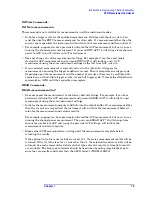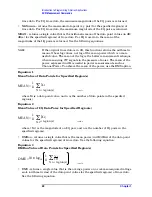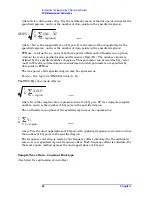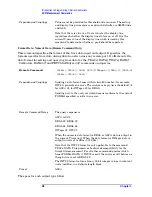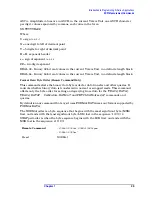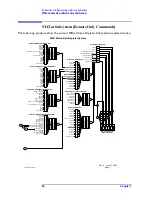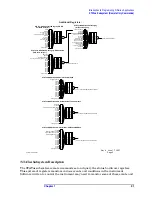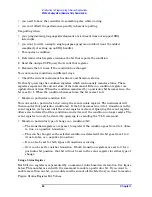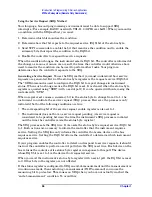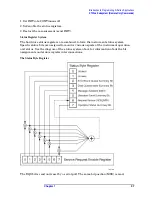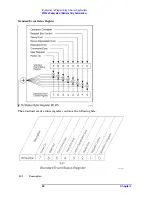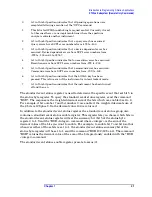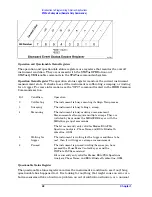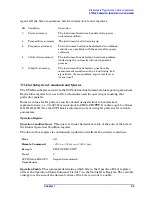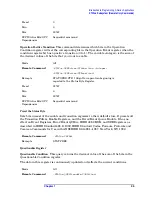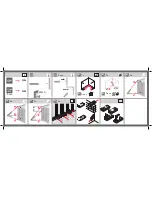
32
Chapter 1
Introduction to Programming X-Series Applications
STATus Subsystem (Remote Only Commands)
conditions.
All status register commands are sequential. Most commands can be started immediately
and will overlap with any existing commands that are already running. This is not true of
status commands. All the commands in the spectrum analyzer are assumed to be
overlapped unless a command description specifically says that it is sequential.
What Are Status Registers
The status system contains multiple registers that are arranged in a hierarchical order.
The lower-level status registers propagate their data to the higher-level registers in the
data structures by means of summary bits. The status byte register is at the top of the
hierarchy and contains general status information for the instrument’s events and
conditions. All other individual registers are used to determine the specific events or
conditions. For a diagram of the registers and their interconnections, see above.
The operation and questionable status registers are sets of registers that monitor the
overall instrument condition. They are accessed with the STATus:OPERation and
STATus:QUEStionable commands in the STATus command subsystem. Each register set is
made up of five registers:
• Condition Register It reports the real-time state of the signals monitored by this
register set. There is no latching or buffering for a condition register.
• Positive Transition Register This filter register controls which signals will set a bit in
the event register when the signal makes a low to high transition (when the condition
bit changes from 0 to 1).
• Negative Transition Register This filter register controls which signals will set a bit in
the event register when the signal makes a high to low transition (when the condition
bit changes from 1 to 0).
• Event Register It latches any signal state changes, in the way specified by the filter
registers. Bits in the event register are never cleared by signal state changes. Event
registers are cleared when read. They are also cleared by *CLS and by presetting the
instrument.
• Event Enable Register It controls which of the bits, being set in the event register, will
be summarized as a single output for the register set. Summary bits are then used by
the next higher register.
The STATus:QUEStionable registers report abnormal operating conditions. The status
register hierarchy is:
1. The summary outputs from the six STATus:QUEStionable:<keyword> detail registers
are inputs to the STATus:QUEStionable register.
2. The summary output from the STATus:QUEStionable register is an input to the Status
Byte Register.
The STATus:OPERation register set has no summarized inputs. The inputs to the
STATus:OPERation:CONDition register indicate the real time state of the instrument. The
STATus:OPERation:EVENt register summary output is an input to the Status Byte
Register.


